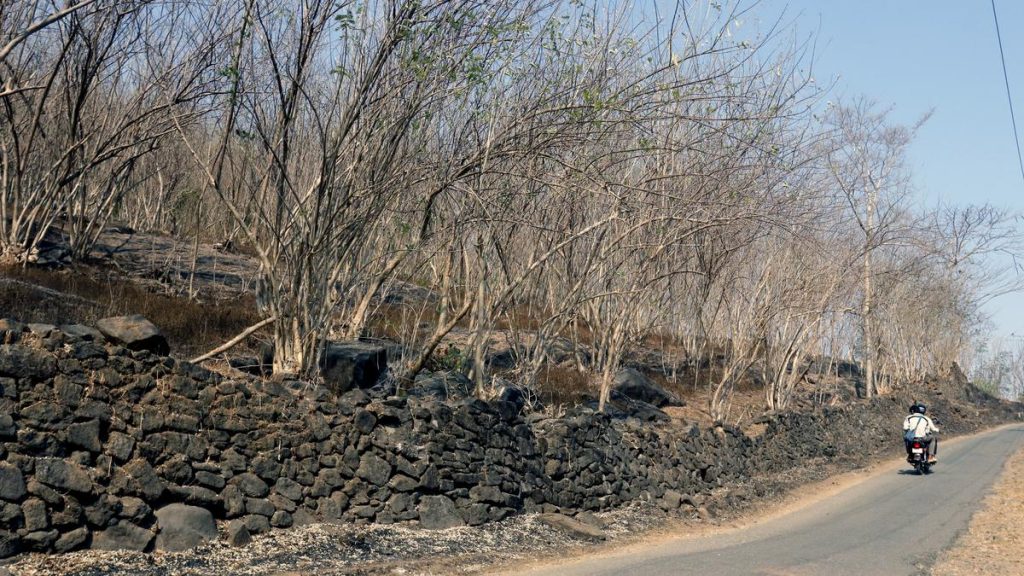
Bike riders passed through the parched forest area near Kulapully in Kerala’s Shoranur where trees are drying due to a lack of water and extreme weather conditions. File photo
| Photo Credit: The Hindu
In the early spring of 2022, South Asian countries including India, Pakistan, and Afghanistan experienced back-to-back extreme heat waves in the months of March and April.
A study published on April 8, 2025, by researchers from the Indian Institute of Technology (IIT) Bombay and Johannes Gutenberg-University Mainz, Germany, has uncovered why South Asian countries experienced back-to-back extreme heat events in early spring of 2022.
Also read: Why is north and central India facing a severe heatwave? | Explained
In the study titled, ‘Contrasting drivers of consecutive pre-monsoon South Asian heatwaves in 2022: waveguide interaction and soil moisture depletion’ published in Journal of Geophysical Research: Atmospheres, a scientific journal of atmospheric research published by the American Geophysical Union; the research team found that these unusually intense heatwave events in March and April of 2022, were driven by different atmospheric processes that compounded heatwave impacts.
Lead author of the study, Roshan Jha, a PhD student at Centre for Climate Studies, IIT Bombay, said, “Our analysis shows that the March heatwave was primarily linked to a sudden increase in the amplitude of short-lived atmospheric Rossby waves, which are large-scale meanders in high altitude winds resembling bends in a winding river. The waves grew stronger as high-altitude westerly winds near the poles (extratropical jet stream) transferred energy to westerly winds closer to the equator (subtropical jet stream) as they came closer during the heatwave.”
The April heatwave happened differently as in, instead of being driven by wind patterns in high altitude, it was largely caused by very dry soil conditions and advection of heat to India from north-western land regions of Pakistan and Afghanistan. Co-author of the study, Arpita Mondal, Associate Professor in the Department of Civil Engineering and Centre for Climate Studies at IIT Bombay explained that importantly, these dry conditions were partly created by the earlier March heatwave, which had already dried out the land through high temperatures and clear skies.
“This research reveals a concerning pattern: one heatwave can set the stage for another, more intense heat event in the following weeks by removing moisture from the soil. When soil becomes too dry, it creates a cycle that makes the next heatwave even worse. When soil has moisture, under the clear sky conditions, some of the sun’s energy goes into evaporating that moisture rather than heating the air. But when the soil is already dry, all that energy goes straight into making the air hotter,” she explained.
Subimal Ghosh, Convener of Centre for Climate Studies, IIT Bombay and Professor at Department of Civil Engineering, IIT Bombay said that understanding these mechanisms is crucial for improving our ability to forecast and prepare for extreme heat events in South Asia. “As climate change continues to affect atmospheric wind patterns, identifying these specific drivers helps us better predict and mitigate the impacts of future heatwaves,” he added.
The other co-authors are Professor Volkmar Wirth and Dr. Christopher Polster from Institute for Atmospheric Physics at Johannes Gutenberg-University Mainz, Germany.
Published – April 16, 2025 10:01 am IST

